Introduction
BriefBuilder comes with a standard set of analysis columns, but you can easily adjust these to your liking. This can be done in the analysis settings which can be found at the bottom of the navigation bar.
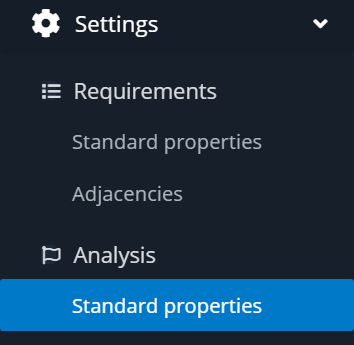
Click on standard properties and you will get to the menu where you can add and modify the standard properties for analysis.
Each standard property can be understood as a column in the analysis table. For example: in the image below, you see two properties:
- Review
- Review note
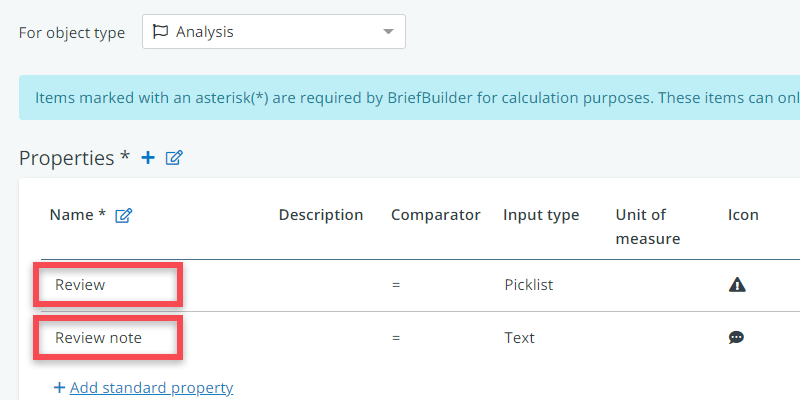
Each of these properties corresponds with a analysis column on the detail view of objects and in the analysis table. See below.
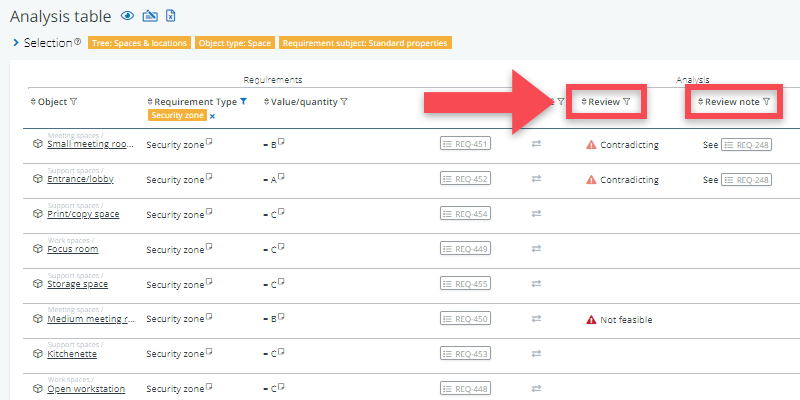
Adding properties
You can add standard properties by clicking on ‘add standard property‘ at bottom of the table.

Next, you can define a number of attributes for each property. For the purpose of analysis only the following attributes are relevant.
Name
This is the name that will be used as a header for the column that you are creating. Keep it short and simple. Could be something like “Requires attention (yes/no)” or “Review outcome”.
Description
This can be some explanatory words about the property. Not as relevant for analysis as it is for requirements.
Input type
With the input type you can define the format of values that are allowed. For analysis, the following input types are most relevant:
- Text: for allowing users to add notes/text.
- User: for making it possible assign the requirement to particular users because it concerns their expertise.
- Picklist: for defining a fixed list of values to choose from. Once you have added a value you can also assign a color to it. For example the value ‘yes’ could be green and the value ‘no’ could be red. You are also able to add a description for every individual picklist option.
Icon
This icon will be shown when using analysis on the detail-view of the requirement. It is used as a visual representation of the Name part of the standard property.
Removing properties
To remove a standard property, click on the icon on the right side of the table.
A pop-up will then be shown.
Now click on Delete to permanently delete the standard property.
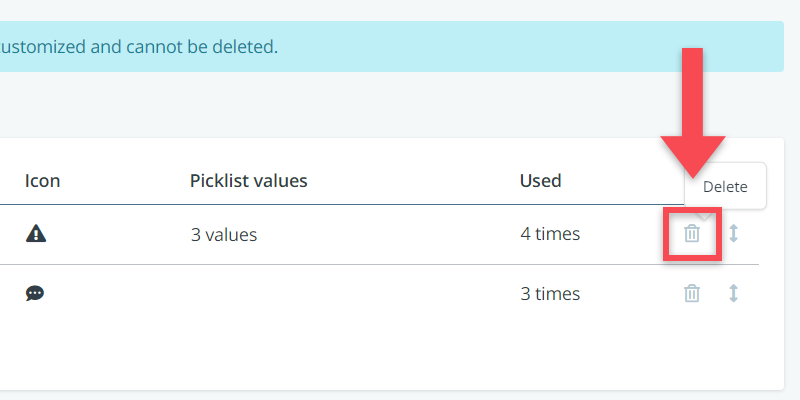
Changing the sequence
It can be that you want to change the order of the columns (and thus the order of the columns in your analysis table). To do so, you have to use the icon at the right side of the table. If you click and hold it you can drag a standard property up or down.
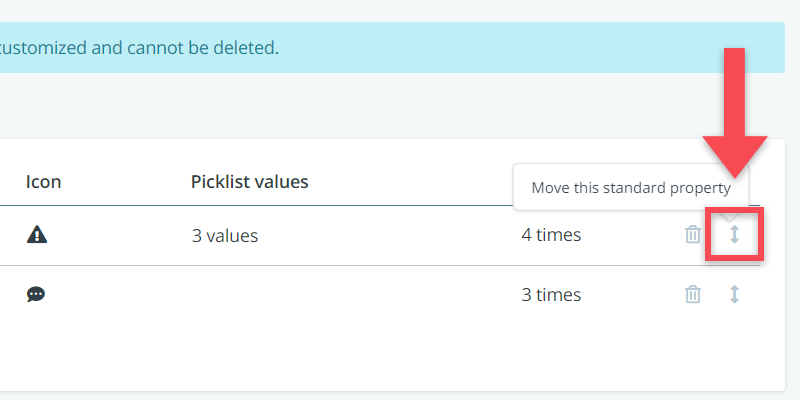
Importing analysis properties from another project
It can be that you have a good set of analysis properties in another project or library model that you want to use in your project as well.
In that case, you can choose to import these properties. This can be done via the import property block button () at the top of the settings page (see image below).
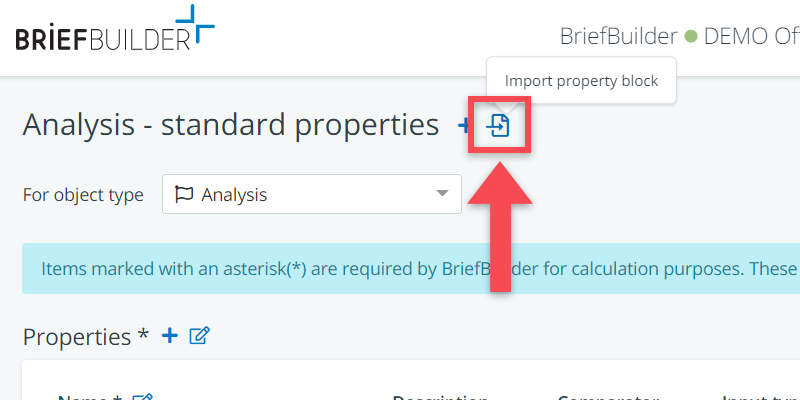
When doing the import, the software checks whether there are properties in the source model and the target model that have the same name.
If that is the case—and if these properties are already in use in your model—none of your property attributes (description, input type, …) will be overwritten. This is to avoid changes to existing data.
But when properties have not yet been used in your model, you will get all the property attributes from the model from which you are doing the import.
